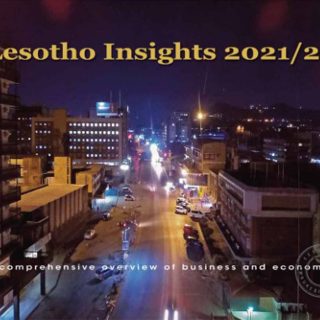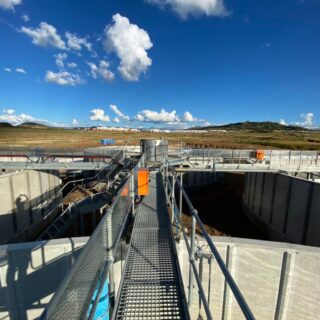A Suzuki Jimny through Lesotho, your perfect alpine retreat

Because of its high altitude and treacherous, yet picturesque mountain scenery, Lesotho has provide a platform to test the endurance of many vehicle models. This can be further credited to the proximity to South Africa, Africa’s hub of vehicle manufacturing and assembling.
Most of the vehicles that are tested in Lesotho are four-wheel drives. Most of these vehicles are tested in the Sani Pass area of Mokhotlong. In fact, so famous is Sani Pass that in the 1980s, Nissan named one its off-road vehicles Nissan Sani. The naming was influenced by the vehicles’ outstanding performance during the test in the Sani Pass. A south African motoring commentator, Dieter Pey takes us through a four-day Alpine adventure as he commandeered a Suzuki Jimny and headed for the beautiful peaks of the Kingdom. Let the adventure begin…
We collected our Suzuki Jimnys in Durban and headed for Himeville just North of Underberg, which would be our last stop in South Africa before crossing into Lesotho. After a quick lunch, we deflated our tyres before embarking on the first part of the trip, which I had looked forward to the most – going up the famous Sani Pass. After a short drive from Himeville, we reached the border post.
Crossing the border in Lesotho came with very little hassle and I got a brand new stamp in my passport (something I hadn’t received since before Covid-19 brought the whole world to a standstill). We hit the first gravel road of the trip soon thereafter and climbed upwards to the high altitudes the Kingdom is renowned for. The clouds rushed in over the mountain peaks and we settled in to watch a quick downpour, but, as we would learn later on this trip, the Lesotho weather changes rapidly, literally within minutes.
We engaged the Jimny’s low range and slowly made our way up Sani Pass. Road conditions weren’t perfect – it was a little bit rocky at the top and the switchbacks got pretty tight, but the Jimny handled the route with ease thanks to its impressively tight turning circle. The pass was not as tough as people explained to us, save for a small part, which was a bit narrow, with a few rocky sections, it’s very doable.
The rumours are also true… We passed a Sani taxi coming down the pass with all the passengers outside of the vehicle jogging alongside it, for what we can only assume was to help with ground clearance on the trickier sections. I will admit, the pass would be a completely different monster in harsh weather conditions, such as snow, black ice, or heavy rain and, considering that the weather can change ever so quickly, it’s best advised to attempt the Sani Pass with care. So, after we restamped our passports (the Sani Pass is situated between two border posts) to re-enter Lesotho, we stopped at the famous “Highest Pub in Africa” and we enjoyed a Maluti (Lesotho beer) at 2 874m above sea level. From there, we drove a short while to the town of Mokhotlong, where we would spend the night at Senqu Hotel.
After a good rest from a long previous day, we were up for sunrise. Emma, my travel companion for this trip, left the hotel and we went to explore a nice spot to capture some sunrise images. We found a beautiful little road on the side of the hill, which had a breathtaking valley in the background. We sat in silence, watching the sun reach into the valley – it was a surreal experience.
After our little photoshoot and breakfast, we rejoined the group and the journey continued. Day 2 did not require much driving, but, then again, driving in Lesotho is slow going. There are many animals, all kinds of debris, people and potholes on the roads, so you have little choice but to travel at lower average speeds. We stopped to take a picture at a low-water bridge, where a construction team was busy building advance infrastructure to the third dam that will be called Polihali, which is part of the Lesotho Highlands Water Project. That very location would be 80 metres underwater in the future, which was certainly food for thought.
As we ventured through the landscape, we passed Afriski, which looked particularly odd with the ski slope being all green and grassy, with no snow in sight. After that, we set off on a jeep track that took us deeper into the scenery and we stopped to pitch a portable braai (as proud South Africans do). We uttered that famous line: “Nou gaan ons braai!” – in the middle of nowhere – and even used the Jimny’s bonnet as a table for the snacks. A thunderstorm started rolling in, so we packed up and got back onto the tar road. We passed a mining area, Letseng-la-terai, famous for highest per carat diamonds in the world, where we stopped. Once more, at a beautiful lookout point.
It was fascinating to see the Basotho people out in the bush as they tended to their animals. As you drive through the unspoilt landscape, with nothing around you for kilometres, you will always find some Basotho in the bush or on a hill living their lives. Then, in the space of fewer than 10 minutes, the weather changed from 27 °C and hot to a thunderstorm… the temperature dropped to 10 °C and we got pelted by hail. The bad weather made us retreat to our cars and on we went to our night’s accommodation called Oxbow. It’s a beautiful little lodge isolated in a valley in the North corner of the country.
Day 3 saw us covering many kilometres – 290 km, to be exact. It may not sound a lot considering it was mostly tar roads, but with slow going through many villages, bad roads, animals in the road and even some roadworks to contend with, you don’t cover ground.
Fast forward from Butha Buthe until Roma on our way to Semonkong, we descended a plateau to a “flatter” part of Lesotho. Past the town Roma, which is home to the National University of Lesotho, we started heading down a road, which I can confidently describe as one of the most beautiful roads I have ever driven on. The roads in Lesotho are all either descending or ascending and the angles are pretty extreme. Just after Roma, there was a steep pass and, after one particular hairpin corner, the road turned upwards at such an angle it seemed near impossible to traverse. It felt like I was off-roading, just looking towards the sky, not in the road, but, rest assured, we were driving on a tarred pass.
We were driving a Jimny 1.5 GLX AllGrip manual. Compared with the previous model’s 1.3-litre engine, the 1.5-litre petrol motor produces an extra 22 kW and 20 Nm. Every bit helps, but given how steep that section of the pass was, the little Jimny still had to work as hard as it could. The motor was revving up at 5 000 rpm on a few occasions, but there was just not enough power to shift up to 2nd gear comfortable, so the gearbox got a workout. I managed to use a little bit of momentum to pass a few Jimnys in the group, which was fortuitous because we all had our accelerator pedals flat on the floor. We were passed by two Toyota Fortuners with the GD6 engines, but they barely made it past, you could see they were also flat out. We were going up this hill at a maximum of 40 kph, but we made it.
After completing the steep uphill, which at times seemed to go on forever, we reached the plateau. From here on, the tarmac was marvellous, as you go over the crests, you watch the road sweep up and down through the valley of the beautiful Lesotho landscape. This amazing road – which constitutes about 30 km of breathtaking scenery – carried on all the way to Semonkong. Ciro De Siena told me that they had a Mustang launch in Lesotho on these amazing roads. You still need to be wary of debris, animals and people on the road, but it was fun to test the Jimny’s handling, it’s not as ungainly as it looks.
Look, the Jimny’s not suited to cornering hastily: the suspension is a little bouncy, there’s a fair amount of body roll and the aerodynamics are, well, unflattering. But the Suzuki’s not built for dynamic driving, it would be unfair to expect it to handle like a hatchback. The square shape does make the 4×4 quite roomy for a very small car. Emma and I had four bags with us, the Jimny’s back seats were folded flat to free up more load capacity and our bags took up a good amount of that space. Oddment space for phones, wallets and camera gear, let alone what other bits and pieces you’ve got with you, is limited.
After those let’s say, illuminating, 30 km of “dynamic” driving, we arrived at Semonkong and enjoyed a delicious dinner and night at Semonkong Lodge.
Day 4 was our last day in Lesotho and we were up early once more. We were heading to the ‘Maletsunyane Falls, which was about 12 km by car or 5 km by horse, the latter of which was undeniably the more scenic – and rustic – route. Three of us decided to take the traditional form of transportation – we would meet up with the Jimnys at the waterfall. And then it suddenly made sense why so many locals used horses as transport in Lesotho… the landscape is utterly unforgiving, a mixture of mud, rocks and slippery angles (and we are crossing the country in arguably the most favourable conditions).
After a short while, we rejoined the group. The waterfall, the Jimnys and the horses all in one place was a beautiful spectacle. On the return route, the horses had no issue through the landscape, except for some mud holes, but the Jimnys had a bit of bad luck. On the way back to the lodge, we heard on the walkie talkie that one of the guides slid off the road, so the team had to perform a recovery to get him back on the road. I was sad I didn’t take a Jimny to the falls as I missed a bit of off-road driving, but it shows why horses are preferred forms of transport – conditions can be very treacherous for vehicles.
We covered approximately 800 km during the four-day trip, most of the driving was done on tar roads, so I could not really test the gravel and off-road capabilities of the Jimny extensive. We do know, based on our previous experience with this Jimny, that it is a very capable off-road vehicle. Suzuki’s plucky 4×4 has enough ground clearance for gravel roads and Jeep tracks and, with the added benefit of a low range transfer case and a short wheelbase, it can clamber over some of the trickiest obstacles. This vehicle will gladly take you out into nature and onto your next adventure on a budget #becauseJimny!







